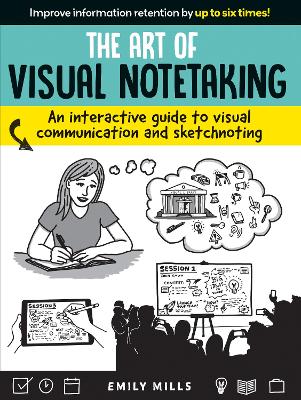Reviewed by annieb123 on
The Art of Visual Notetaking is a methodology and information guide to interspersing graphics and illustrations in notes when journaling or producing lecture notes or other situations for disseminating information to others or accessing it ourselves at a later point in time.
Released 21st Jan 2019 by Quarto on their Walter Foster imprint, it's 128 pages and available in ebook and paperback formats.
When I was in school the first time around, notes were written almost verbatim from the lectures. We copied things by rote and learnt things by repetition. There was very little information (or, honestly, interest) about different learning styles or the effectiveness of other note taking strategies. My second educational experience, after a gap of more than 25 years was a shock to me. We had workshops and tutorials where the primary goal was to develop effective visual strategies for note taking.
This book builds on the research suggesting that the majority of us are visual learners who benefit from interspersing written notes with illustrations and graphics. The point of taking notes is to be able to access the information at a later point; either for one's own use or for sharing with others. It was interesting to me to see so many of the talking points in the book coordinated with the extracurricular study help lectures we had available during my education as a bioengineer.
Effective and accessible notetaking helped me to succeed when getting a second education. Now that I work in the healthcare sector, my data presentation and note-taking skills are more important than ever. To give one example, we have resources at work which teach academics to make an effective presentation poster for conference or lecture use. There are regular departmental meetings which have direct impact on our lab procedures and our production goals. Keeping track of my notes from these meetings is absolutely vital.
This particular book uses illustrations, sidebar notes and highlighting to break info down into digestible chunks. Different media (electronic, whiteboard, paper, etc) get their own treatments along with a list of their pros and cons.
In my opinion, there's a fair bit of 'fluff' in this book. Probably 15-20% of the content is things that might not contribute significantly to the subject at hand, such as a diagram of the inside of a felt tip pen.
That being said, there's a phenomenal amount of information here for such a short book. I will definitely practice and incorporate sketch-notes in my professional note-taking and my personal journaling.
Four stars. It's a useful and accessible guide.
Disclosure: I received an ARC at no cost from the author/publisher for review purposes
Reading updates
- Started reading
- Finished reading
- 22 March, 2019: Reviewed
